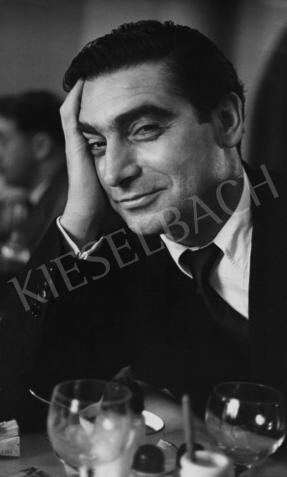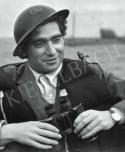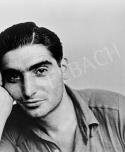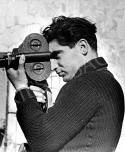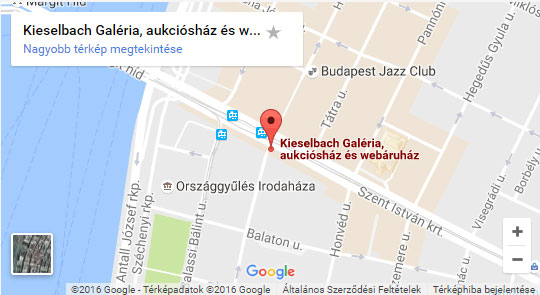CAPA, ROBERT / Endre Ernő Friedmann Budapest, 22. October, 1913 - May 25, 1954, Thai-Binh
Photoreporter.
After the Lutheran element he went to Madách High School.
1929: Under the influence of Kassák he began to interest in journalism.
From 1930: He photographing.
1931, July: He moved to Berlin. He is studying journalism at the German Political College (Deutsche Hochschule für Politik). He is working in a photo lab at the Dephot Photo Agency (Deutscher Photodienst).
1932: He became known with a photograph of Trotsky about the Socialist Congress in Copenhagen.
Weltspiegel published his pictures on the whole site.
1933: He came to Vienna, and Budapest. Here he met again with his Work-round’s friends.
1933, September: He went to Paris. He calls himself André Friedman, so he tries to sell his pictures. With little success. André Kertész helps him with work, relationships, friendship.
1934: His first photoreports was released in Vu, and at that time he changed his name to Capa.
1936–37: Along with the credentials of the left-wing French weekly Regards, they went along with Gerda Taro to photograph the Spanish Civil War. His image of the militia's death became irrevocably classic. He worked in London, Paris, then went back to Spain and photographed Barcelona. He was everywhere where the sky rang. Apart from Regards, his pictures were published in Life. He has published numerous pictures in newspapers, like in Weekly Illustrated, and in Picture Post. It comes from him: "Robert Capa, the world's greatest war photographer". He moved to America, became a war correspondent. He photographed in England, North Africa, Sicily, Italy and landed on the D-Day with the first American troops. He reported on the last offensive of the Germans in Belgium, photographed Leipzig's fall.
1941: with the writer Diana Forbes-Robertson made a book about the London air battle titled The Battle of Waterloo Road. After the war he got American citizenship with the officially name, Robert Capa.
1945-46: He went to Hollywood for the sake of his love, for Ingrid Bergman, where he worked for a short time as a cameraman assistant, film director.
1947: He traveled to the Soviet Union with John Steinbeck. In the same year, he founded Magnum in New York with Henri Cartier-Bresson, David Seymour, George Rodger, William Vandivert and his wife, and Maria Eisner.
1947: He traveled to Turkey and took along with a 16mm film recorder. A little later he reported on the birth of the state of Israel. He captured the struggles of the emigrant Hungarian battalion fighting for the liberation of Jerusalem.
1948: He spent six weeks in Hungary, recording the increasingly evident signs of communist influence.
1954: the Life sent to Indochina to report on French colonial struggles. On May 25 he stepped into a mine and died. General René Cogny awarded him a posthumous Croix de Guerre award.
His Books:
Death in the Making [Gerda Taroval], 1937 New York, Covici Friede. The Battle of Waterloo Road (text: Diana Forbes-Robertson), London, 1941. Random House, Invasion !, Appleton-Century, New York, London, 1944. Sligthly Out of Focus, New York, Henry Holt and Company,
Russian Journal, John Steinbeck, pictures Capa / 70 photos / 1948, New York, Viking Press, Report on Israel (with Irwin Shaw) 1950 New York, Simon and Schuster, Images of war. 1964. Grossman Publishers, Sommertage, Friedenstage Berlin 1945 (Edition Phototek XVI), Sligthly Out of Focus 1947, Images of war, Russian Hournal (Text by John Steinbeck, pictures by Capa), Das Gesicht des Krieges. (Robert Capa mit Auszügen aus seinen Schriften) Econ Verlag GMBH, 1965, Capa & Capa: Brothers in photography. ICP. 1990. Children of War, Children of Peace, Boston, 1991, Robert Capa. Photo poche. Center National de la Photographie, 1992, Testimonty Against war. Magnum Photos Tokyo, 1995. Treasure of Charles-Kolta Magdolna: Capa. Photos of Robert Capa at the Hungarian Museum of Photography. MFM, Kecskemét, 2005. Slightly blurred. My memories of the war. Park Publishing House, Budapest, 2006. Irwin Shaw-Robert Capa: Israeli Reports. Park Publishing House, Budapest, 2009., John Steinbeck-Robert Capa: Russian diary. Park Book Publisher, Budapest, 2009., Jenő Sevcsik: Photo tricks, shooting catches. Bp. 1971; Műszaki Publisher Bp. 1974.
Literature:
Miklós Erdély: Pictures of the War. Reflection over Robert Capa's portrait. Fotóművészet, 1966. 4. 53-56. p. (-): Robert Capa. Photo, 1974. 5. Iván Boldizsár: The Presence. (catalog, Capa memorial exhibition, Műcsarnok), Imre Csatár: On the way. Capa. Magyar Nemzet, 28. March 1976. György Markos: My Friend, Capa. Élet és Irodalom, 3. Apr. 1976 Gyula Rózsa: The life of the militia. Népszabadság, 10. Apr. 1976 (-): So Capa saw the victory of the people's front. Új tükör, 3. Aug. 1976 Péter Ábel: Who has faced the horror ... Photo, 1976. 5. 194-201. p., (-): Robert Capa tells Ingrid Bergman: "I'm a gambler" Film Színház Muzsika, 14-15-15th 1982. p., Gábor D. Hackett: My Memorable Friends. Magyar Hírlap, 20. Aug. 1983 p. 43, Mary Blume: Lost Photos of Capa. Hungary, 1983, 48. nov. 27. 16. p. Klára Tőry: Wars of Capa. Magyar Hírlap is an attachment of the Hungarian Journal, 10. Sep. 1983. Richard Whelan: Robert Capa. Alfred A. Knopf, New York 1985. Miklós Pákovics: "The Sympathetic Foreign Enemy" or Robert Capa's Poker. Kisalföld, 17. June 1986, Klara Szarka: Capa. Magyar Hírlap, 28. March 1987 p.8, András Simor: The death of the militiaman (poem by Robert Capa) Magyar Hírlap annex, 28. March 1987 p.8, Karinthy Ferenc: Capa. (Published in the End in the World Book, 1988, p. 67-80, László Lugosi-Lugo: Magnum Photo, June 1989, p. 255-259, István Antal: Lo! the Shark. .. Photo, 247-261 June 1989, István Dénémeth: The Living Dead. Photo, 25. June, 1989, (with 1 picture), Péter Szántó: 150 years old Photo. Robert Capa and Juszuf Karsh’s Exhibition in Budapest. Reform, 17. Mar., 1989 Richard Whelan: Robert Capa IPM Library Bp 1990. Miklós Jancsó: Thai Binh. Filmvilág, 27-29 September, 1994 (3 pictures), Péter Molnár Gál : The cinema icon (Ingrid Bergman and Endre Friedmann) 168 hrs., Aug. 1995, (-): Identification of the militiaman Népszava, 5. Sep. 1996. Judit Xantus: Recognized the militia. Esti Hírlap, 4. Sept. 1996, Kincses Károly: Photographers - Made in Hungary. Kecskemét – Milano, Hungarian Museum of Photography –Frederico Motta Edition 1998., (-): Robert Capa and Judaism, Saturday, 2000. 4., Turai Hedvig: The Mexican suitcase - Robert Capa's discovered Negative. Műértő, March 2008, Gabriella Csiffáry: Crushing. Handbook of Famous Hungarian Emigrants. Corvina Publisher, Budapest, 2015. 309-313. p, Júlia Cserba: Hungarian-born photographers in France from the 1920s to the present. Corvina, Budapest, 2019. 50-55. p., Éva Forgács: Eyes with tears. Fotóművészet, 1985/4. p.20.





